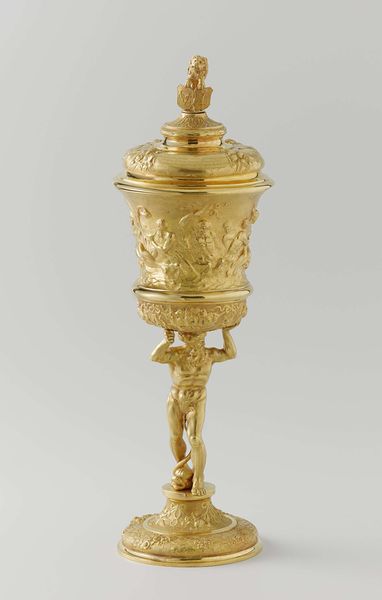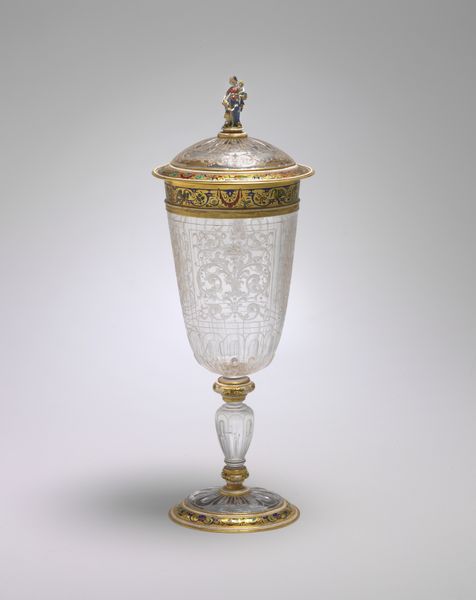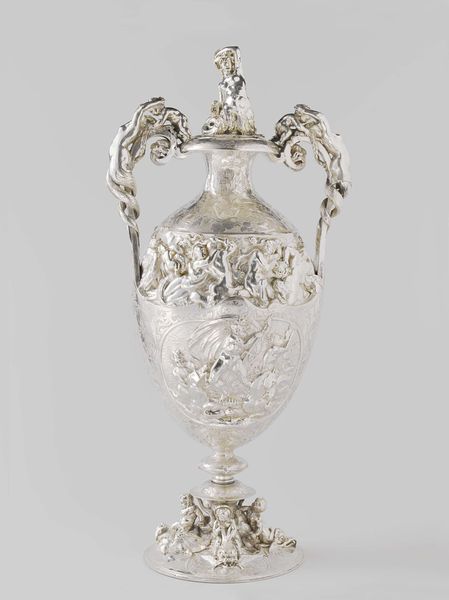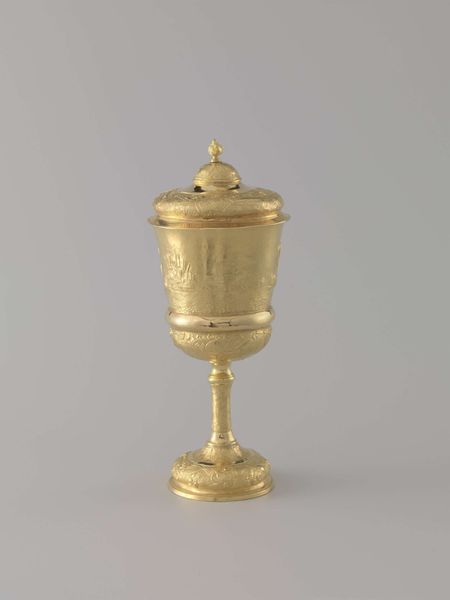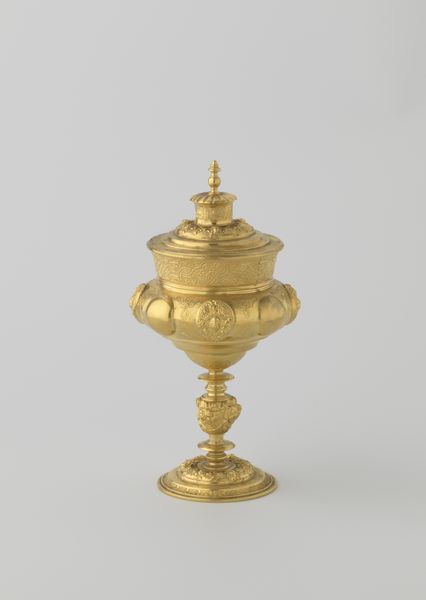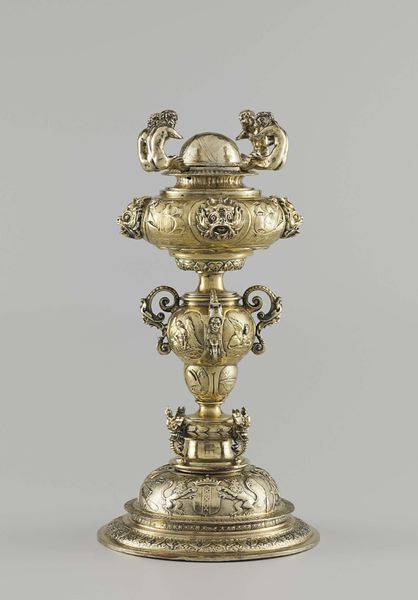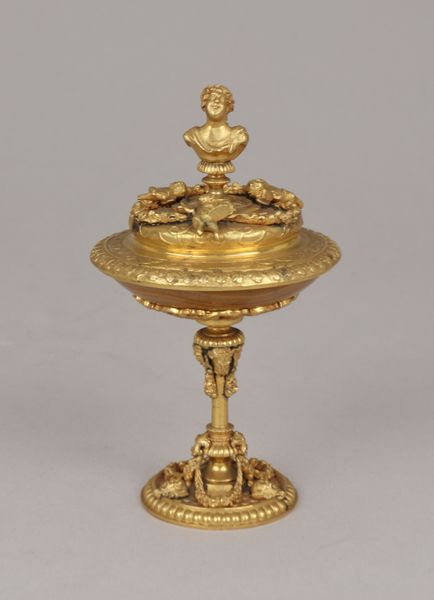
Ostrich egg cup and cover c. late 19th century
0:00
0:00
silver, metal, ceramic, sculpture
#
silver
#
metal
#
ceramic
#
11_renaissance
#
sculpture
#
ceramic
#
decorative-art
Copyright: Public Domain
This ostrich egg cup, now at the Minneapolis Institute of Art, formerly attributed to Hans Petzoldt, features an ostrich egg mounted in elaborately worked silver and gold. Ostrich eggs were prized rarities, symbols of wealth and status, due to the difficulties and costs associated with the materials and the making of the cup. Consider the labor involved. The egg would have been carefully prepared, its delicate surface embellished with engraved ornament. Then a silversmith would have used the techniques of chasing, repoussé, and casting to create the elaborate mounts, pedestal, and finial figure. These highly skilled processes resulted in a dazzling display of virtuosity. The cup represents a collision of natural and cultural capital. The egg itself speaks of exotic trade routes, while the precious metalwork testifies to the owner’s power and taste. Objects like these remind us that the concept of “fine art” is far from neutral; it's a direct reflection of the economic and social conditions from which it emerged.
Comments
minneapolisinstituteofart almost 2 years ago
⋮
Once regarded as the work of the German silversmith Hans Petzoldt (1551-1633), this cup and cover are now known to date from the late 19th century. Exotic objects like ostrich eggs were treasured by collectors in the 16th and 17th centuries. In the late 19th century, these rarities were prized so highly that a market for fakes sprang up.
Join the conversation
Join millions of artists and users on Artera today and experience the ultimate creative platform.
